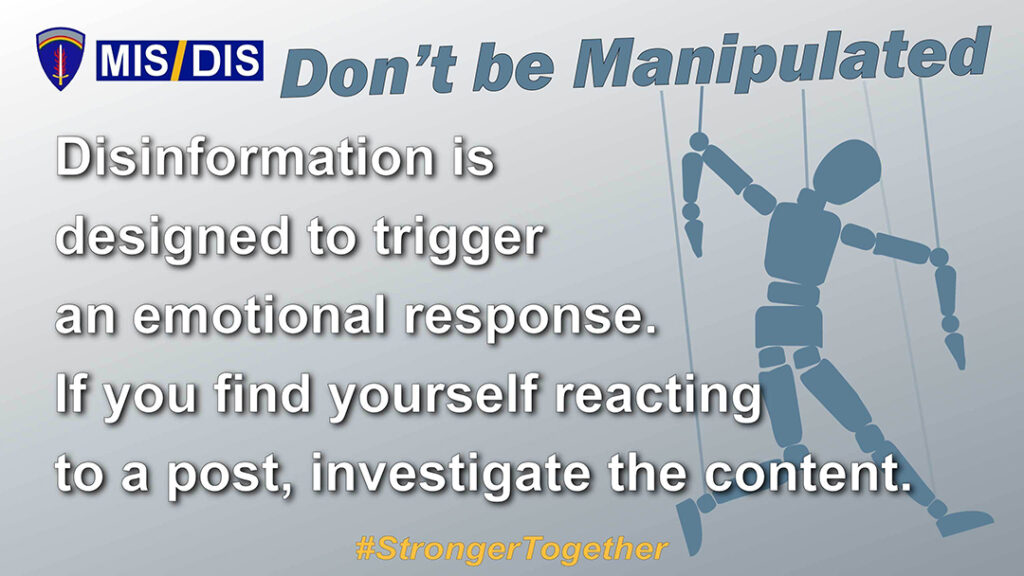THE WATCH STAFF
Russia’s disinformation campaigns are built on five “pillars” that work together to spread pro-Kremlin propaganda and sow division, according to the U.S. Department of State (DOS).
By understanding how those pillars operate — especially the use of “proxy sources” — the United States and the West can counteract Russia’s tactics, DOS official John Spykerman said.
Spykerman spoke on “Information Resilience: Countering Russian Propaganda and Disinformation” during a September 29, 2021, video conference as part of the Distinguished Speaker series presented by the Royal United Services Institute of Nova Scotia and U.S. Northern Command.
His talk drew from an August 5, 2020, special report from the Global Engagement Center (GEC) of the DOS titled “Pillars of Russia’s Disinformation and Propaganda Ecosystem.” Spykerman is the Russia Team director for the GEC, which analyzes and responds to foreign disinformation. The report outlines the pillars as: official government communications, state-funded global messaging, cultivation of proxy sources, weaponized social media and cyber-enabled disinformation.
“All of these pillars are working together constantly, and they are amplifying each other,” Spykerman said.
Still, the main focus of the GEC’s 77-page report is proxy sources. Spykerman said that many such websites appear to be independent but will spread or amplify Kremlin narratives.
“In many other cases, though, these proxy sites are actually controlled and directed by the Russian government — sometimes usually even Russian intelligence services,” he said.
Spykerman described how the proxies get disinformation to go viral on Facebook, Twitter and other social-media platforms:
“They’re able to do that because they have these very straightforward names [“News Front,” for example] … and when it shows up in your feed, it’s just one story. You don’t see what else is on the website … but [the story is] chock-full of disinformation. You might unintentionally or intentionally absorb that narrative.
“You’re more likely then to … post it to other people. And it becomes very hard for fact-checkers, debunkers and so on to counter it once it has spread.”
The GEC also looks at disinformation from state and nonstate actors, including China, Iran and terrorist groups. Yet, Spykerman said, Russia presents the biggest challenge because of its long history of using disinformation and how it was able to adapt quickly to the internet age, including with its state-controlled Russia Today (RT) television network and the Sputnik news service.
Still, Spykerman said, the Kremlin has a specific strategic goal: “Divide Western societies, and have citizens lose trust in their democracy and democratic institutions.”
Russia does this through its ability to understand which societal issues resonate emotionally with people, Spykerman said. Once triggered by disinformation — COVID-19 is such an example — people are more susceptible and more willing to hold on to their beliefs.
“Russia is really exploiting a well-known psychological concept, which is that when you do have an emotional connection to information or disinformation … you are more reluctant to let that go,” Spykerman said.
How can these tactics be counteracted? Spykerman points out that Russia is not generally viewed as trustworthy.
“If you can … look at this information as part of an active Russian intelligence operation and you can explain it, you have a chance of countering disinformation and stopping it from establishing an emotional connection to an audience,” he said.
“So, this idea of counterdisinformation is exposure, supported by debunking and resiliency building,” he said. “That’s kind of the core of our work at the GEC.”
Spykerman also sees the teaching of media literacy as crucial, and he wants social media platforms to “enforce their own terms of service agreements.” He recommends that people think about how online news sources are interconnected — check to see who supports the site and where its links lead, then help others to understand those origins. Finally, report such sites to social media platforms, the legitimate media and even to government agencies.
“If you find after two or three clicks that all of your links come back to Sputnik or go back to RT,” he said, “then you’re probably in the wrong company.”
IMAGE CREDIT: STAFF SGT. GEORGE DAVIS/U.S. ARMY

